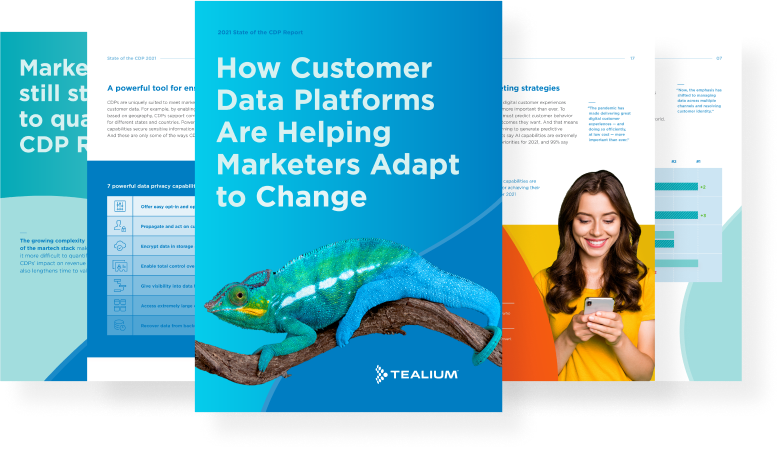Marketers continued investing in CDPs despite budget cuts during the pandemic, recognizing the technology’s central role in addressing third-party cookie loss and more.
The pandemic shifted marketers’ priorities
All of the organizations in our survey (100%) saw at least some marketing budget cuts due to COVID-19, and 41% saw cuts over 20%. Though the pandemic made organizations more reliant on digital channels for reaching their customers, most marketers couldn’t afford to invest in new tech solutions. More than three-quarters (77%) of organizations cut tech initiatives in 2020 due to COVID-19.
At the same time as budget cuts were forcing them to do more with less, marketers shifted their priorities to address new challenges caused by the pandemic. For marketers without a developed first-party data strategy, the demise of third-party cookies made it harder to manage ad spend across digital channels. Tighter budgets made customer acquisition and retention more difficult. And finally, the restriction or elimination of in-person experiences put incredible pressure on marketers to offer a unified customer experience across channels — particularly digital ones.
“More than three-quarters (77%)
of organizations
cut tech initiatives
in 2020 due
to COVID-19.”
Top marketing priorities that became more important due to COVID-19
“Now, the emphasis has shifted to managing data across multiple channels and resolving customer identity.”
Our results suggest that marketers are using their CDPs to address these challenges head-on. For example, in our 2020 report, respondents reported various forms of real-time functionality were the most useful capabilities of a CDP. Now, the emphasis has shifted to managing data across multiple channels and resolving customer identity — which are important for delivering seamless digital experiences in a post-cookie world.
Change in top most valuable functionalities of a CDP year over year
#4
#3
#2
#1
2021 may see a rise in CDP investment
Despite the drop in tech investment overall, there wasn’t a drop-off in CDP investment during COVID-19 — likely because CDPs are so important for addressing marketers’ pandemic-related concerns. Eighty-nine percent of marketers we surveyed had a CDP, and nearly a tenth (9%) had adopted a CDP since the beginning of the pandemic in March 2020.
In 2021, marketers will make up for lost time by increasing their tech investments. Eighty-nine percent of organizations will spend more on tech in 2021 than they did in 2020, and almost one-third (32%) will spend significantly more. Perhaps because they were hit harder by the pandemic, travel and hospitality marketers were most likely to say they’ll spend significantly more. The big question: Where will marketers allocate these funds in 2021?
“The big question: Where will marketers allocate these funds
in 2021?”
Key Takeaway
Marketers understand that CDPs are key to unlocking the full potential of first-party data. A CDP can anchor a robust customer data supply chain that frees your organization from excessive reliance on third-party data. It can also enable accurate attribution of ad spend and channel, enabling more effective ad spend management. Finally, a CDP supports a unified customer experience across channels, built on first-party data acquired with customers’ consent.
Recommendation
With third-party cookie loss, a first-party data strategy is no longer optional. As tech spending rebounds in 2021, look to invest in a CDP that is equipped to meet the challenge of third-party cookie loss, while also supporting better customer experiences.












